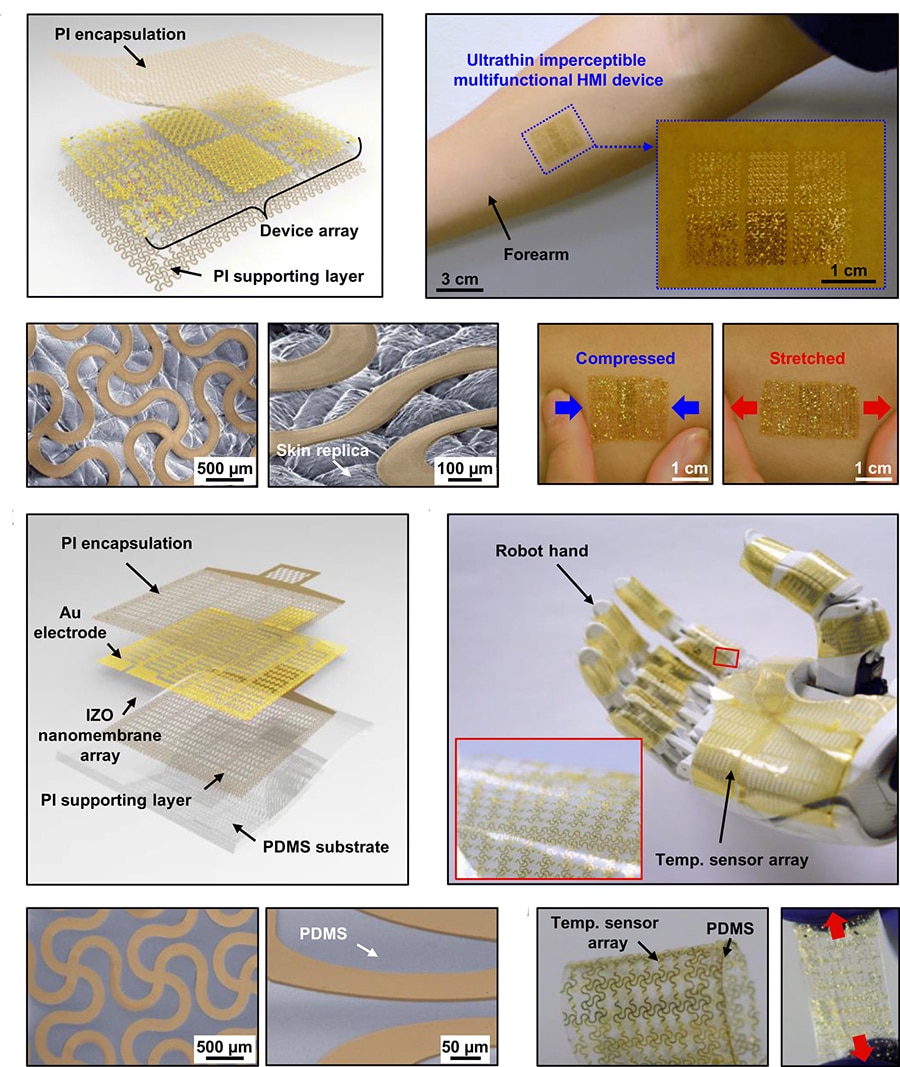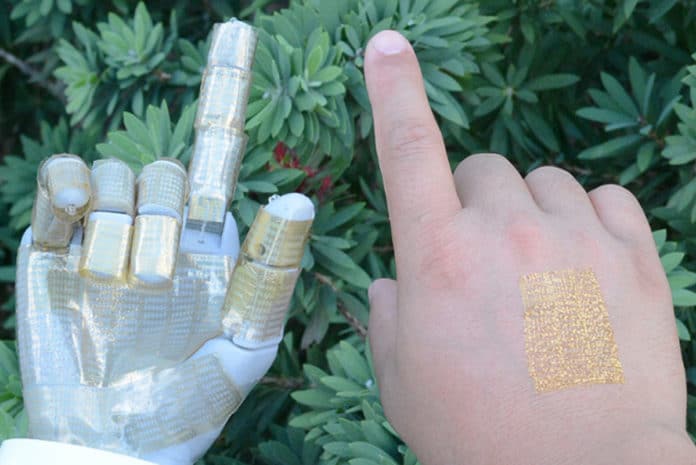Wearable human-machine interfaces (HMIs) are important devices that function as direct communication pathways between humans and machines. By sensing the physical and electrophysiological parameters from the wearers, they enable the machines to perform specific functions correspondingly, for instance, collecting and storing important health information about the wearer.
Recent advances in electronics, materials, and mechanical design offer avenues toward wearable HMI devices. While current devices are gaining in popularity, they can still be bulky and uncomfortable, restrict the human body’s motion, and can’t always handle multiple tasks simultaneously.
Now, researchers at the University of Houston have developed a multifunctional, ultra-thin wearable electronic device that the wearer won’t even feel it. It allows the wearer to move naturally and is less noticeable than wearing a Band-Aid.
This ultra-thin electronic device can be used as prosthetic skin for a robotic hand or other robotic devices, with a robust human-machine interface that allows it to collect information and relay it back to the wearer automatically.

Besides being bulky, current devices offer slow response times and suffer a drop in performance over time. And more flexible versions cannot provide multiple functions at once, such as sensing, switching, stimulation, and data storage. In addition, they are generally expensive and complicated to manufacture.
The new wearable device is a metal oxide semiconductor on a polymer base, offers manufacturing advantages and can be processed at temperatures lower than 300-degree C. This ultrathin stretchable electronics wearable offers several advantages like multifunctionality, simple manufacturing, imperceptible wearing, and robust interfacing.
Such a type of stretchable device paves the way toward low-cost, wearable HMI devices capable of seamless and robust interfacing with the wearer. Besides, it also enables the wearable HMI device to become a vital technology with enhanced capabilities, comfort, and convenience toward enhanced interaction and teaming between humans and machines.
“We report an ultrathin, mechanically imperceptible, and stretchable (human-machine interface) HMI device, which is worn on human skin to capture multiple physical data and also on a robot to offer intelligent feedback, forming a closed-loop HMI,” the researchers wrote in the study published in Science Advances.
“The multifunctional soft, stretchy HMI device is based on a one-step formed, sol-gel-on-polymer-processed indium zinc oxide semiconductor nanomembrane electronics.”
Journal Reference
- Kyoseung Sim et al., Metal oxide semiconductor nanomembrane–based soft unnoticeable multifunctional electronics for wearable human-machine interfaces. Science Advances. 5, eaav9653 (2019). DOI:10.1126/sciadv.aav9653
